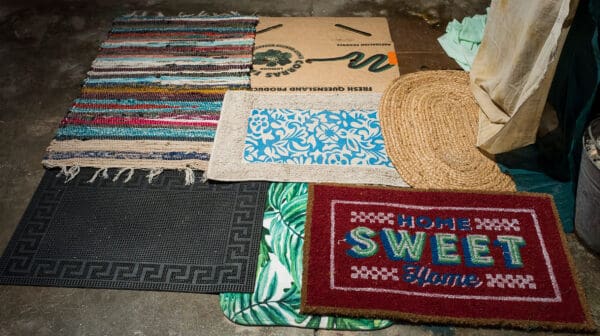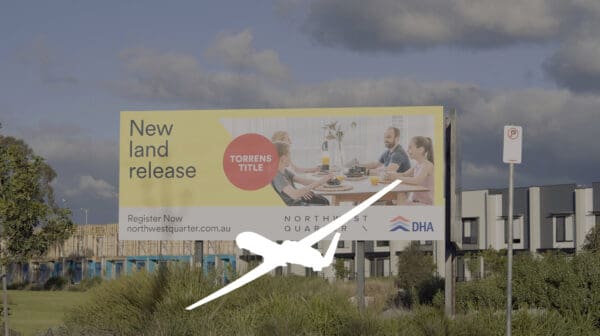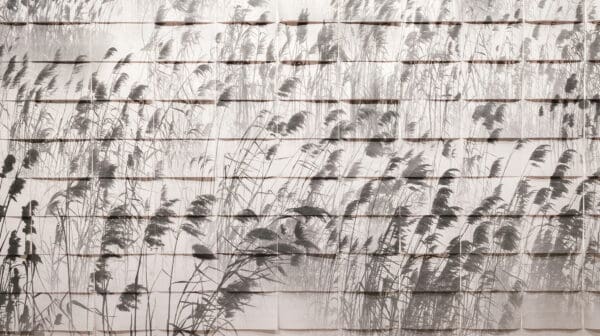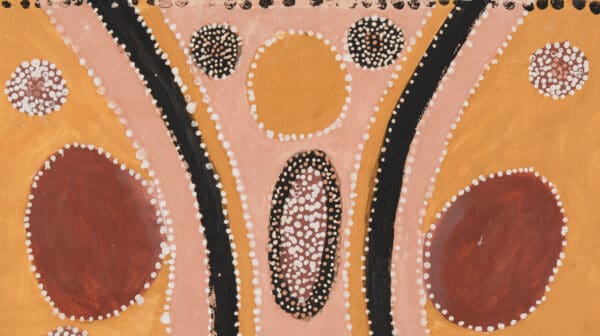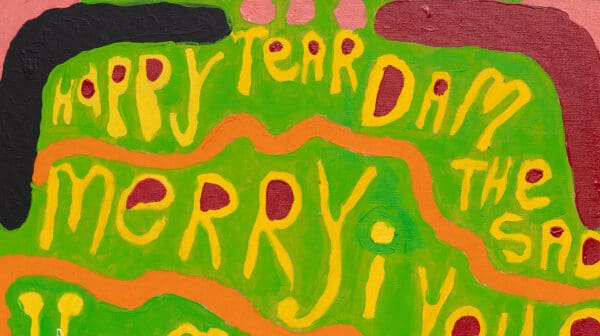In recent years group exhibitions, often labelled ‘biennales’, have proliferated globally and their appearances are often arbitrary. Sometimes they are presented within the restricted walls of one space, while in other incidences they spill across multiple sites in a city. Within these exhibitions, curatorial rationales can take on many forms. One concern influences their shape: finding the balance between the curators, framing of the exhibition, and allowing the artists’ work to stand on its own. Layering on too thick an interpretation can obscure the artwork, affecting the integrity of the artists’ practice. In other cases, a curator’s strong viewpoint can set a theme that highlights a cultural moment or position.
At Adelaide//International, a new series of exhibitions at the Samstag Museum of Art that will occur yearly as part of the Adelaide Festival, the objective is to allow the artists’ vision to stand first and foremost. For this iteration, two local artists, Brook Andrew and Eugenia Lim, and two international artists, Lisa Reihana and Ming Wong, will present discrete exhibitions at Samstag.
This series continues the institution’s collaboration with the Adelaide Festival, where previously guest curators have worked to a theme and held an exhibition across multiple locations. “The idea behind the programming structure of the Adelaide//International was to work to a flexible framework that would allow us to delve into ideas prevalent across national and international contemporary art,” says Gillian Brown, curator at Samstag. “It’s a chance to try something complementary, but consciously different, to the popular multi-venue biennial/triennial approach.” The approach this year combines touring exhibitions with work by artists that were already formulated, pulling these together under “an overarching rhetoric that was led by what they were already working on,” says Brown.
This presentation is not without focus however, using themes of migration and identity as an anchoring point, though without belabouring the connections. “This first iteration takes the form of four distinct exhibitions, as well as a program of talks and panel discussions that are broadly linked through their exploration of historical and contemporary migration, cultural exchange, and the impact of cultural stereotyping on identity,” says Brown. New Zealand artist Reihana’s much-lauded video panoramic work in Pursuit of Venus [infected], commissioned for the Venice Biennale in 2017, will be shown for the first time in Adelaide. An immersive screen-based work, Singaporean artist Wong’s video triptych In Love for the Mood (2009) restages Hong Kong auteur Wong Kar-wai’s iconic film In the Mood for Love (2000) with a Caucasian actress who plays the roles of both man and woman. Brook Andrew will present Room B, an immersive installation partly drawn from his exhibition at Musée d’ethnographie de Genève in 2018, and a recent video work, SMASH IT (2018). By combining historical documents pertaining to Indigenous histories and a personal growing archive of artefacts and written records, Andrew critiques colonial systems of classification and provides new readings through often confronting experiences.
Lim’s exhibition comprises a trilogy of works in which her ‘Ambassador’ figure – where she dresses in a gold lamé Mao suit – is a central fixture.
The ‘Ambassador’ is inspired by the late artist Tseng Kwong Chi who took self-portraits in front of tourist monuments in America dressed in the persona of a Chinese ambassador. Lim explains how she was drawn to “this serious Asian man in a Mao suit taking his self-portrait in front of Western icons.” His poses reminded Lim of her family’s photo albums. “What struck me,” she says, “is that there could be repetition in art history and my own family archives. And I started to think OK, I can work with this costume. I can work with the awkward but intentional expressions and gestures of this persona.” The colour gold was chosen as it is “a loaded symbol of wealth and mining but also xenophobia,” says Lim. “The suit is a symbol of Asianness but it’s also hard to read at the same time.”
In her subtly comical video work Yellow Peril (2015) the ‘Ambassador’ is filmed in the gold rush theme park Sovereign Hill in Ballarat, while The Australian Ugliness (2018), a multi-channel video, looks at the impact of architecture on our identity and our bodies. The People’s Currency performance work will see the ‘Ambassador’ supervising participants: Lim describes her character morphing into a “statuary overlord” and “boss character”. Here Lim creates a special economic zone where the general public can sign up as one of the Ambassador’s workers for a 5-minute employment contract.
Brown says on Adelaide//International, “The issues in these artists’ works raise the question of who holds the power of narration. The deliberate clustering of four separate exhibitions through programming rather than curatorial intervention allows us to consider the cognitive spaces artists create as exhibition makers, and the stories they want to tell.” For these particular artists, who are making work outside of the Eurocentric narrative, this hands-off curatorial approach is more than fitting to allow them the space to tell individual stories.
Adelaide//International
Samstag Museum of Art
28 February—5 April
This article was originally published in the March/April print edition of Art Guide Australia.
